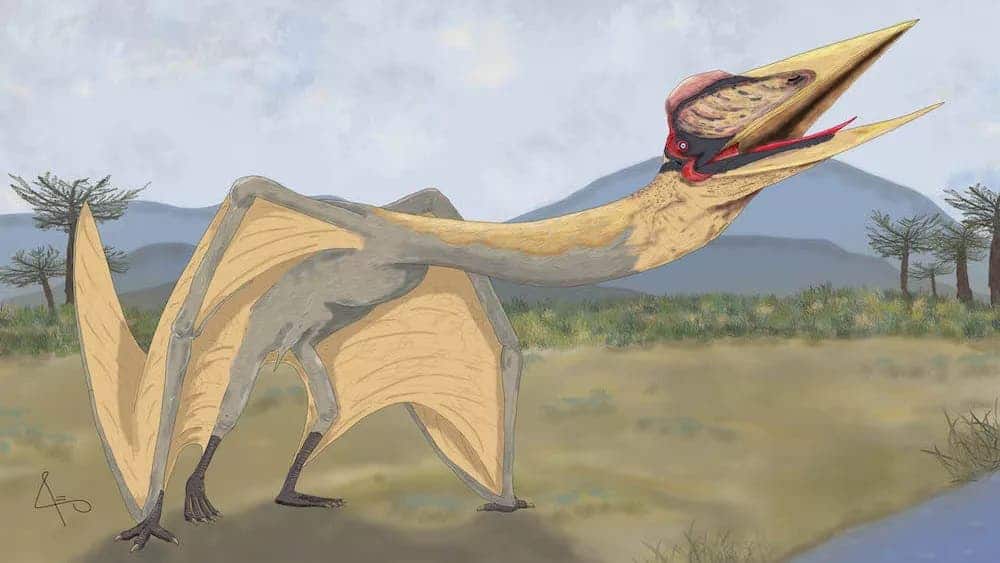
In 2012, while performing digs for a civil construction project in the floodplains of Mendoza, a province of Argentina, local paleontologists made the discovery of their lifetimes. They found two well-preserved specimens belonging to a new massive species of pterosaur, an ancient flying reptile whose wingspan rivaled the length of a school bus. The formidable winged reptile, aptly dubbed the ‘dragon of death’ by the researchers, is the largest pterosaur ever found in South America.
The pterosaur belongs to the azhdarchids family, whose members lived during the end of the Cretaceous, between 145 million and 66 million years ago. These pterosaurs are easily recognizable due to their very large skulls — which can sometimes be larger than their entire sleek bodies — and highly elongated necks. The vertebrae and limbs are fundamentally distinct from other species, allowing the researchers to establish a new species of pterosaur.
The two specimens, one with a wingspan of 23 feet (7 meters) wide, the other spanning 30 feet (9 m) wide, were unearthed in different states of preservation, including complete arm and foot bones, along with dorsal vertebrae, as well as more fragmentary fossils like toe bones and forearm bones.
Both dinosaurs died at exactly the same time, around 86 million years ago, according to Leonardo Ortiz David, the director of Argentina’s Laboratory and Museum of Dinosaurs in Mendoza and lead author of the new study, and the smaller one was still developing when it died. However, this doesn’t necessarily mean they were part of the same family, though the researchers think that is still plausible.
Ortiz David named the new species Thanatosdrakon amaru. The genus’ name is a combination of the Greek words for death (thanatos) and dragon (drakon), while the species name, amaru, means “flying serpent” in Quechuan. In Inca mythology, amaruca is a huge double-headed serpent that dwells underground, at the bottom of lakes and rivers.
“It seemed appropriate to name it that way,” Ortiz David told Reuters. “It’s the dragon of death.”
“We don’t have a current record of any close relative that even has a body modification similar to these beasts,” he added. Ortiz David also headed an impressive reconstruction project of the new pterosaur, now on display in Mendoza.
The findings appeared in the journal Cretaceous Research.









